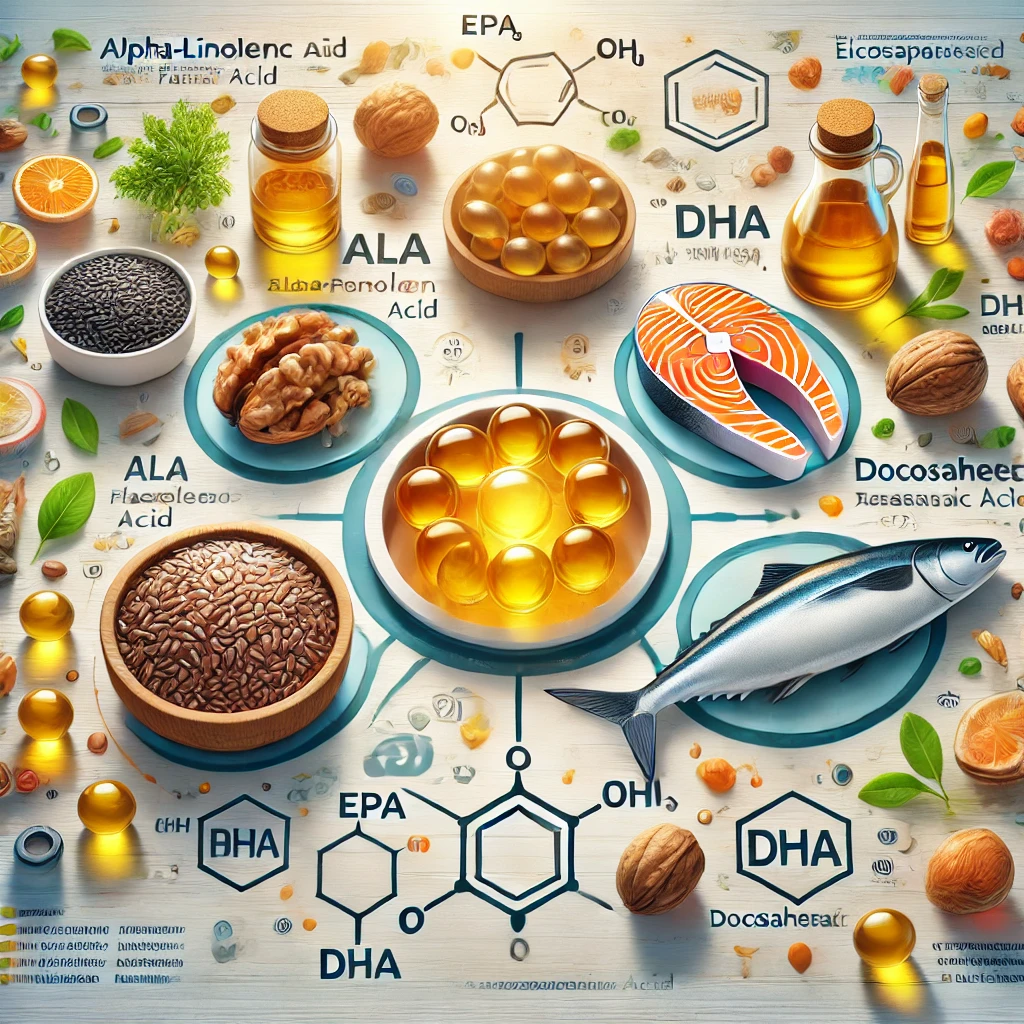Omega-3 Fatty Acids: Types, Bioavailability, and How to Get the Right Amount Daily
- Zeki Onbaşı
- Mar 6
- 2 min read
Updated: Mar 11
Omega-3 fatty acids are essential polyunsaturated fatty acids that the body cannot synthesize, making dietary intake necessary. These fatty acids are characterized by the presence of the first double bond at the third carbon from the methyl end of the carbon chain. Omega-3s are known for their anti-inflammatory properties and play a crucial role in various physiological processes, including cardiovascular health and brain function.
Types of Omega-3 and Bioavailability Differences
Omega-3 fatty acids are classified into three main types:
Alpha-Linolenic Acid (ALA): Found in plant sources such as flaxseeds, walnuts, chia seeds, and canola oil. ALA can be converted into EPA and DHA in the body, but the conversion rate is very low (between 1% and 10%). Therefore, obtaining EPA and DHA directly is more effective in terms of bioavailability.
Eicosapentaenoic Acid (EPA): Primarily found in cold-water fish (such as salmon, mackerel, and sardines) and seafood. EPA is known for its anti-inflammatory effects and its significant role in heart health.
Docosahexaenoic Acid (DHA): Essential for brain and eye health. The best sources of DHA are seafood and fish oils. It is also present in breast milk and is crucial for infant brain development.
Bioavailability Differences Between Plant-Based and Animal-Based Sources
Plant-based omega-3 sources (ALA) have limited conversion capacity into EPA and DHA, making their direct consumption from animal sources more effective for health benefits. While plant sources remain an essential part of the diet, they may not be sufficient alone to meet omega-3 requirements.
Bioavailability Differences in Animal-Based Omega-3: Phospholipid vs. Triglyceride Forms
Omega-3 fatty acids exist in different chemical forms in nature, affecting their bioavailability:
Phospholipid Form: Found in krill oil, this form is structurally similar to phospholipids in cell membranes, making it more efficiently absorbed in the intestines and allowing for faster entry into the bloodstream.
Triglyceride Form: Commonly found in fish oil, this form also has high bioavailability but requires slightly more energy for digestion compared to the phospholipid form.
Phospholipid-form omega-3s may be more effective for brain and cell membrane health, while triglyceride-form omega-3s still provide significant overall health benefits.
Recommended Daily Intake of Omega-3
The recommended daily intake of omega-3 fatty acids varies depending on individual factors. General guidelines include:
For healthy adults:
EPA + DHA: 250-500 mg/day
ALA: 1.1-1.6 g/day
For individuals at risk of heart disease:
EPA + DHA: 1,000 mg/day
For pregnant and breastfeeding women:
EPA + DHA: 300-900 mg/day (with at least 200 mg from DHA)
Obtaining Omega-3 from Food vs. Supplements
From Food:
Consuming fatty fish (salmon, mackerel, sardines, tuna) 2-3 times per week provides sufficient EPA and DHA.
Plant-based sources such as walnuts, flaxseeds, and chia seeds contribute to ALA intake.
From Supplements:
Fish oil capsules or krill oil supplements can help meet daily requirements.
Labels should be checked for EPA and DHA content.
High-quality products containing antioxidants to prevent oxidation should be preferred.
Omega-3 fatty acids play a vital role in overall health. When obtained from both food and supplements appropriately, they contribute to cardiovascular health, brain function, and inflammation control.




Comments